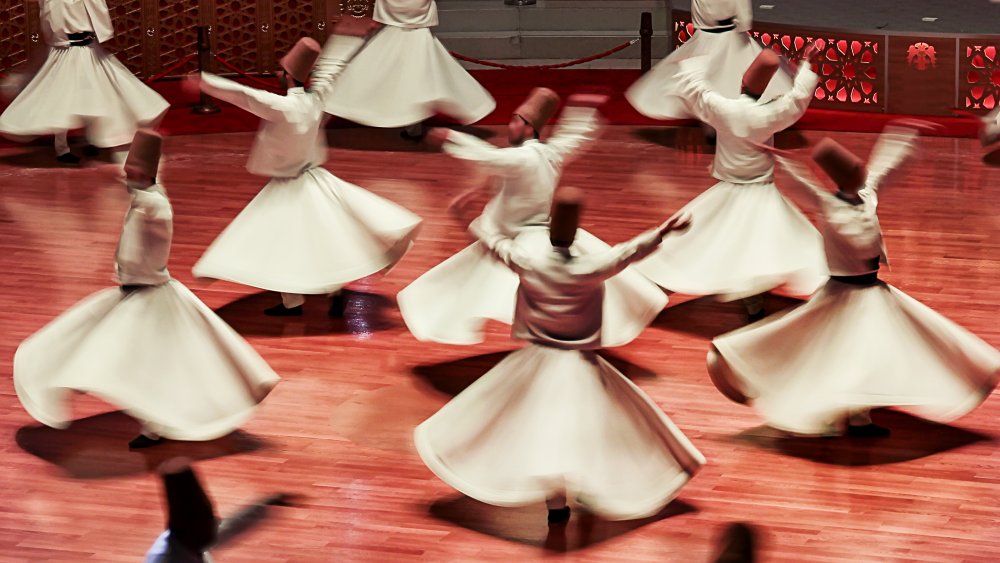The Truth About The Whirling Dervishes
A trip to Turkey isn't complete without observing a ceremony called Sema, the highlight of which are the whirling dervishes. The dervishes — dancers — spin with their arms raised, some for hours at a time, in order to reach a trance-like state of mind called Sufism, which History Daily describes as "a state of inner power and peace that allows the person to feel a deep love and connection to the rest of the world."
As Encyclopedia Britannia tells us, the practice of spinning to reach Sufism was begun by the followers of the 13th-century poet and Sufi mystic Rumi, also known as Mevlana. Rumi met a traveling dervish, or holy man, named Shams al-Din in 1244 and believed him to be divine. Rumi began to devote more time to al-Din than his scholarly studies, and this did not sit well with his followers. They killed al-Din in order to release Rumi from that influence, but the poet was so distraught that he went into an extended period of mourning.
The idea of communing with god through dancing was a product of Rumi's grieving process. Others began taking part in the Sema ceremony, and Rumi's followers, led by his son, founded the Mevlevi Order of Islam in 1312. It expanded throughout the Ottoman Empire and was a common religious practice for centuries until the 20th century.
The movement of the whirling dervishes is symbolic
After the fall of the Ottoman Empire in 1922, Turkey's first president, Mustafa Kemal Ataturk, began to secularize the country. Sufism was declared illegal, and whirling dervishes had to take their Sema ceremonies underground in order for the practice to survive. The dancers were allowed to come out of hiding in 1956, but only as a cultural heritage — a tourist attraction.
In an article for the Washington Post, Cara Tabachnick expressed regret for not knowing the history of the whirling dervishes before attending a demonstration. Tabachnick went on to explain the significance of the dance. The dervishes begin the ceremony in black robes that represent their worldly existence, which are symbolically removed as the ritual progresses. The white skirts beneath represent the dancers' egos, and conical hats atop their heads stand as the tombstones of these egos. The colors of the hat change, depending on the sect. Even without fully understanding the ceremony, Tabchnick said, "I knew the magic was enough to make me want to seek out this mystical world once again."
The truth about the whirling dervishes is that they're only one of many reasons to visit Turkey and delve into their rich history. It seems that you find an interesting story almost anywhere you look in the country, including news of an ancient "lost" civilization discovered by archaeologists in 2019.

